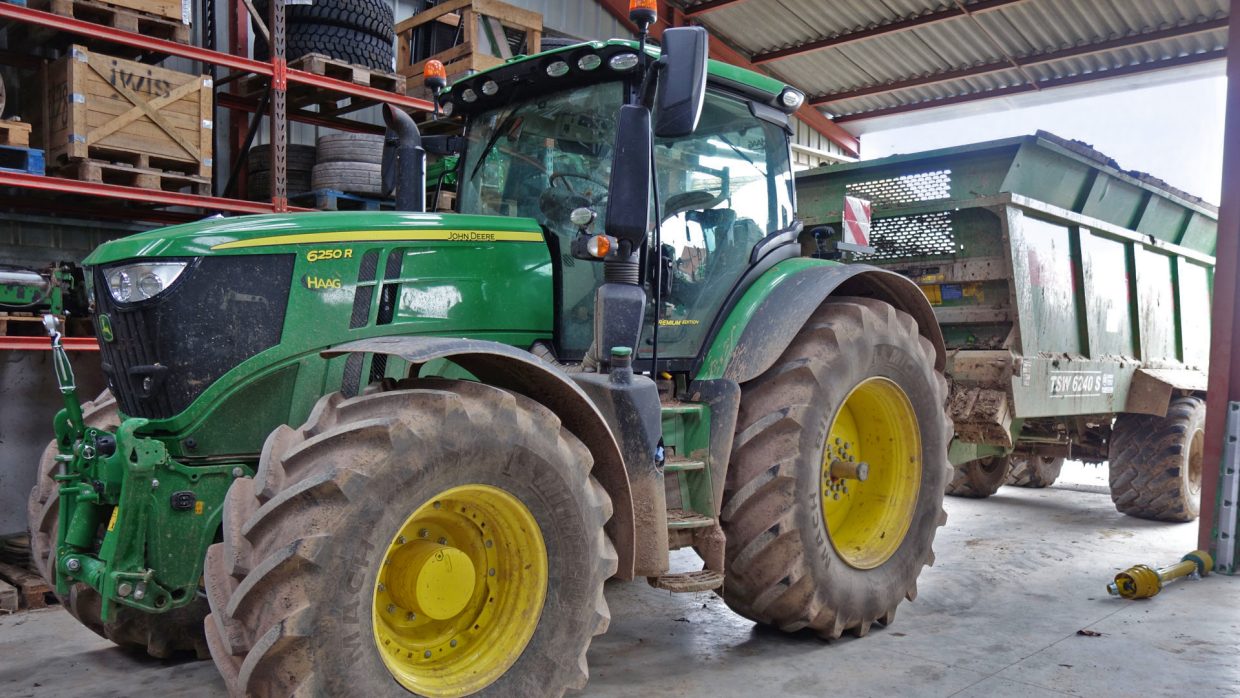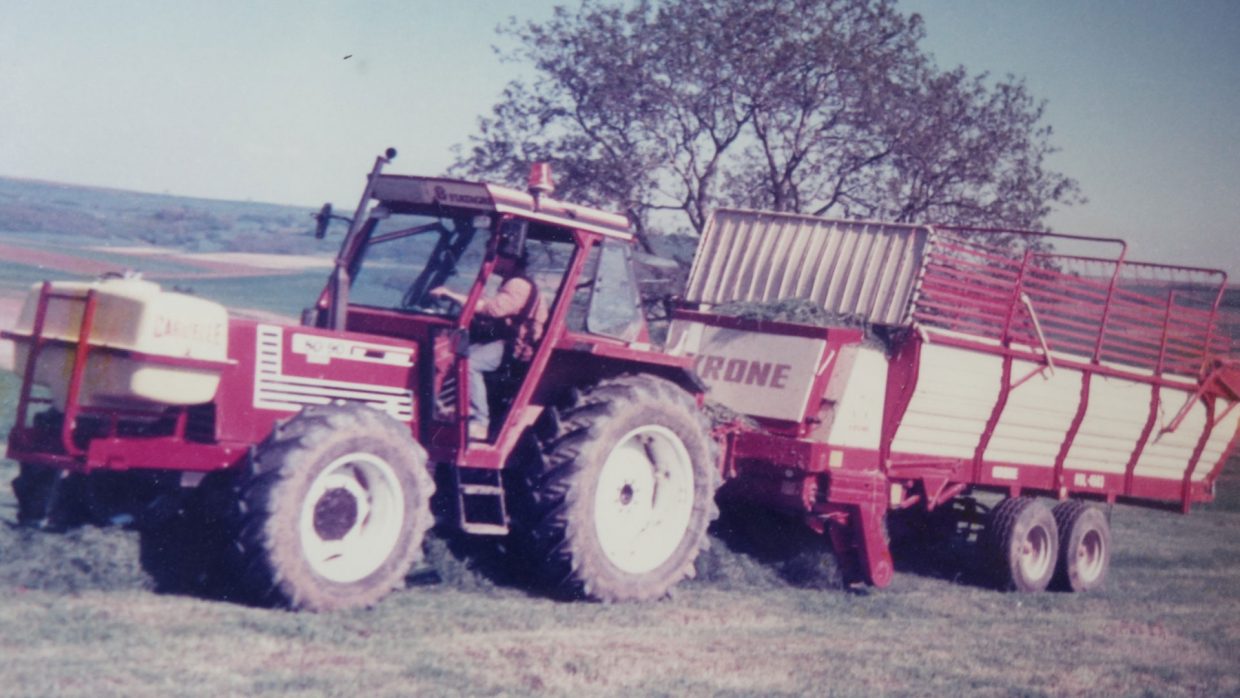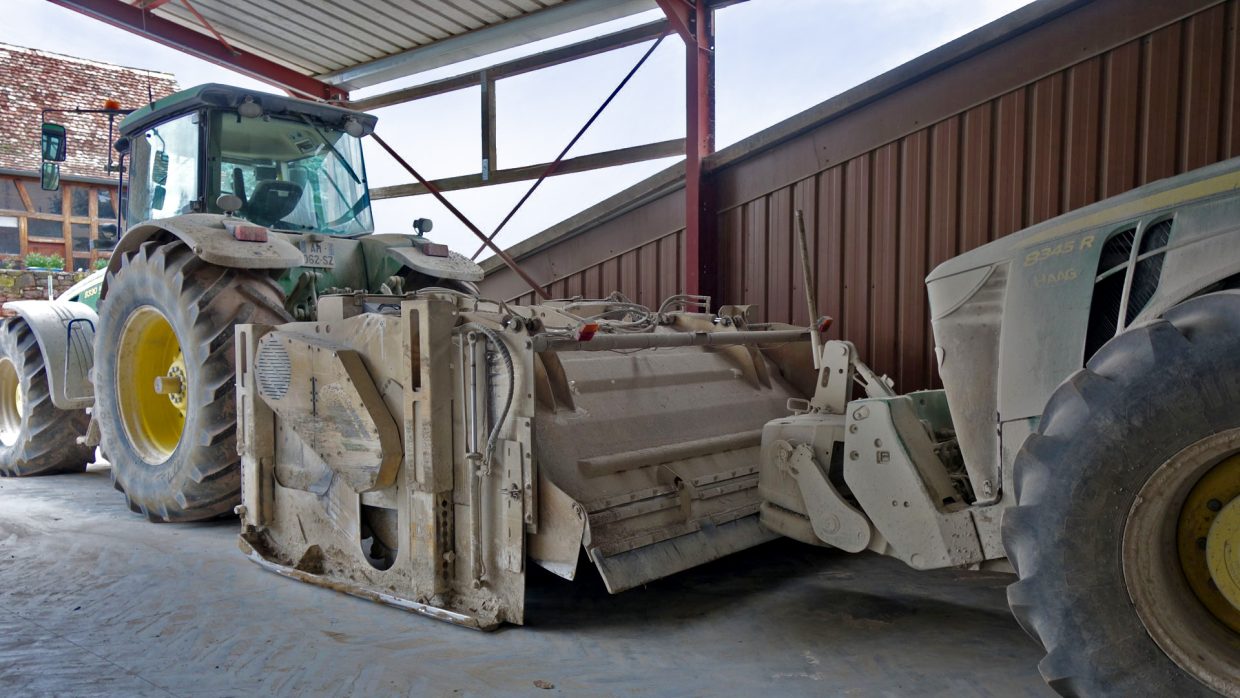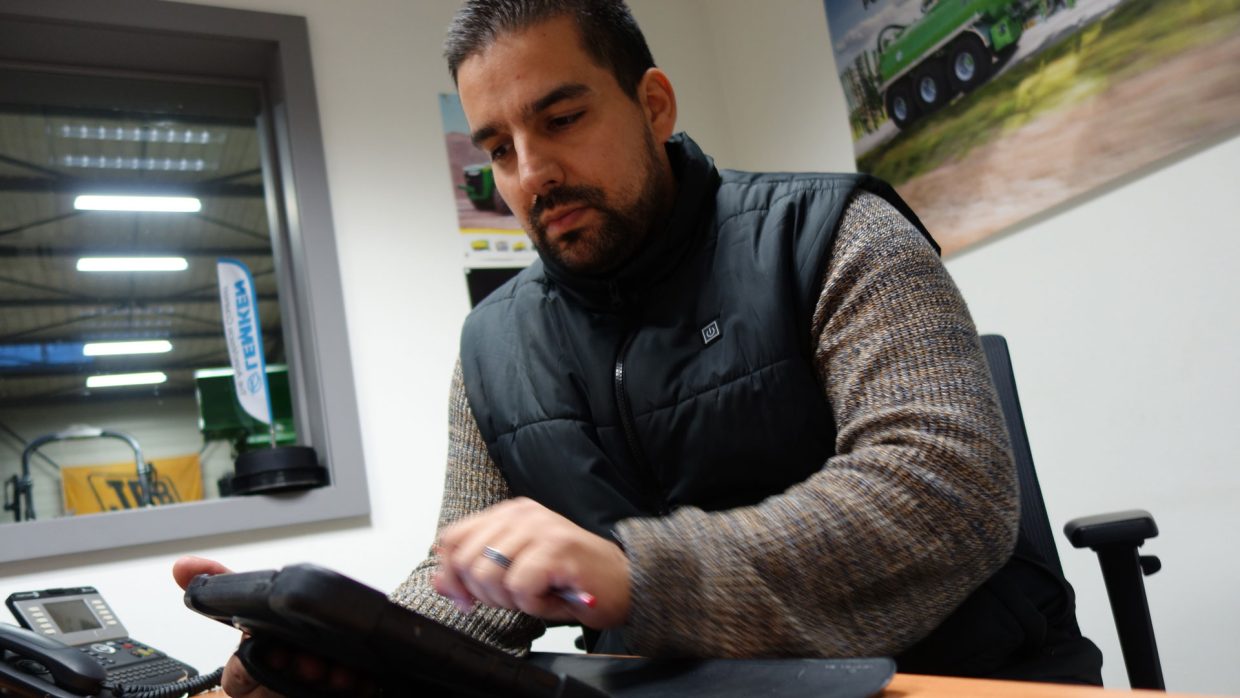The goal of any contractor should be diversification, which helps build customer loyalty, and ensures machines are used profitably. As part of Mr Diss’ focus on diversification, and in consultation with Alsatian company Gützwiller, which developed an innovative technique for repairing roads, Mr Diss began approaching major players in the construction industry in 2003, like Vinci, Eiffage and Colas – to offer soil stabilisation services.
ETA Diss in brief
- 6 full-time employees
- 9 John Deere tractors with Autopowr transmission, including four Series 7000 and four Series 8000
- 4 John Deere self-propelled forage harvesters, including one 8400 i
- 4 John Deere combines
- 4 Wirtgen soil stabiliser mixers 2.50m
- 3 Streumaster spreaders
- 1 Panien low-volume spreader
- 1 Bergmann spreader for compost and solid digestate
- 1 Toomey scraper 3.00m
- 1 trailed 8-row single-grain seeder

With the diversification operating successfully, Mr Diss has taken on work at quite a distance from his base. Recently, one of the tractors left for a full month, working 200km from Landersheim. Mobility is key; on the back of a powerful tractor, the contractor can carry a cutter weighing more than five tonnes, capable of mixing the earth, and a hydraulic binder like quicklime or cement, explains Mr Diss. “The big companies have self-propelled machines, but are limited logistically, needing large trailers for transport, while we are able to work on smaller sites.”
Soil stabilisation is not for amateurs
“Construction sites have several machines working at once,” explains Mr Diss. “Each machine has a very specific role: spreading, mixing, levelling, compacting, etc. Running out of fuel before operations are complete is simply not an option.”
Using his smartphone and the JDLink application, Mr Diss can accurately track operational information from his tractors, including fuel data. He can also view precise GPS positioning coordinates of the tractors in relation to diesel deliveries, which is invaluable.
Why is lime used to stabilise soil?
Lime, an ancient and natural material, has bonding power that improves soil, making it suitable for backfill and capping layer construction. Two hours after mixing, the bearing capacity index of treated soil is four to 10 times higher than that of untreated soil, greatly improving machinery movement options. The incorporation of lime promotes a chemical “setting” reaction, identical to that of cement. After three to six months, the same reaction increases compressive strength and improves frost stability.
Source CIFATP
There are many examples of connectivity benefits
Mr Diss remembers detecting an alternator problem on a vehicle using his smartphone, “I was able to act immediately by ordering the part, so no operating time was lost.”
The same was true for a failed reversing signal. “We were able to re-activate it with a simple software download from Haag, which avoided unnecessary travel. These machines are expensive, and our goal is to keep them operational. John Deere connectivity helps us do that.
Additional price buyers are willing to pay for used machines with a spotless maintenance and inspection history and warranty coverage:
+8 %
A recent study focusing on a large sample of John Deere tractors, forage harvesters and combines showed up to an 8% increase in residual values for those that had a history of maintenance, inspections, and warranty work.
John Deere connectivity utilises the know-how of engineers who have gone beyond failure prevention and applied their expertise to performance analysis. Information on excess slippage or consumption, for example, can be transmitted to the owner, allowing the vehicle to be kept in optimum operating condition. And now, in partnership with a John Deere dealer, connected machines can benefit from proactive maintenance monitoring.







